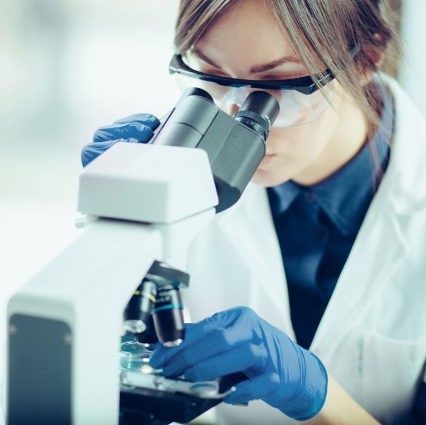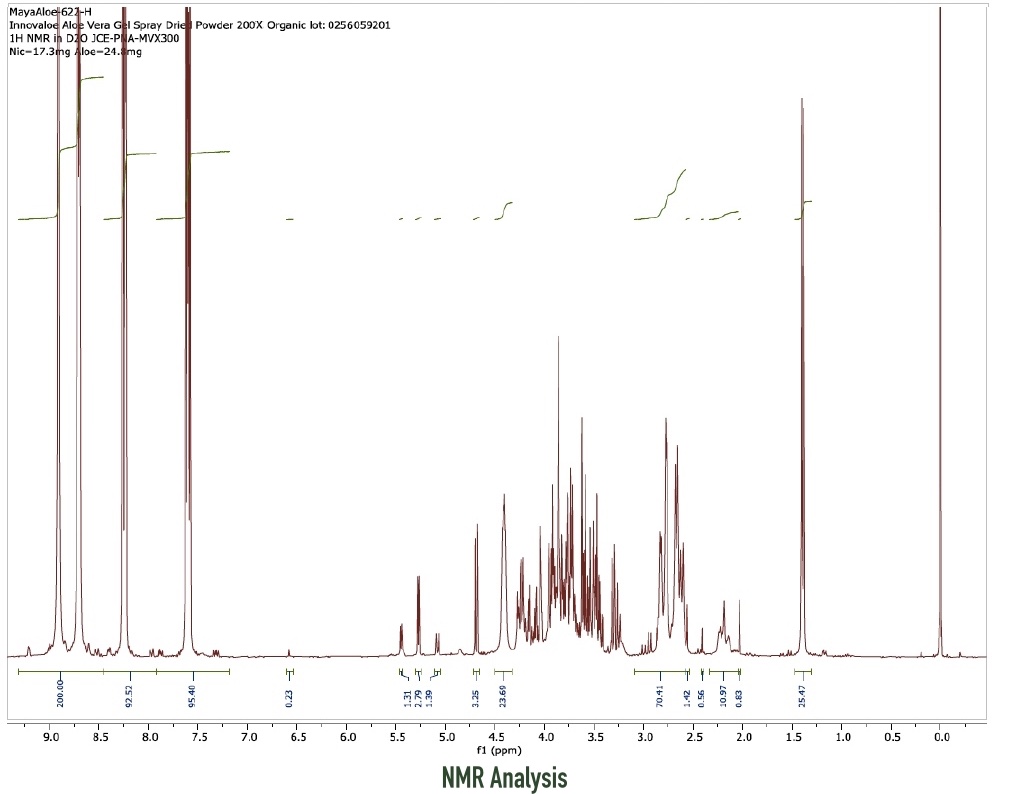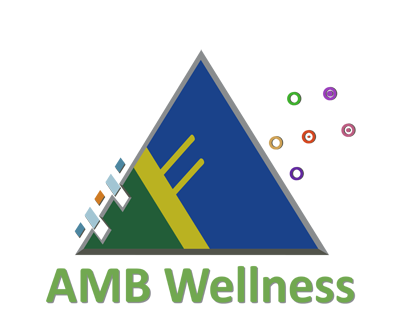NMR
Nuclear Magnetic Resonance
Spectroscopic Measurement of Aloe Vera.
How to define what is aloe vera 100% pure?
The IASC have established standards to define what is (and what is not) “aloe vera” in finished products. The IASC standard states that only products containing acemannan, or the beta 1-4 acetylated glucomannans, can be accurately labeled as aloe vera. Acemannan is a naturally occurring polysaccharide that is present in aloe vera and is used as an identifier of the botanical by analytical means. Products that do not contain acemannan are not considered to be true aloe vera based on this standard.
How to know if a product truly contains Aloe Vera?
Aloe vera is a widely recognized and popular ingredient, and many products claim to contain aloe vera on the label. As with many industries, adulteration and misbranding can occur.
NMR is a method that can be used for the direct detection and quantitation of the primary components of interest in Aloe Vera juice products and raw materials for compliance with International Aloe Science Council (IASC) certification requirements, specifically, for determination of the content of acetylated polysaccharides (AP), the presence of glucose, the presence and concentration of maltodextrin, and the concentration of isocitrate. NMR was used to detect acetylated polysaccharides, acid, and suspected adulterants.
The method is applicable to a large number of different Aloe Vera raw materials and products, including liquid and dried juices. In aloe vera finished products the method is only applicable when the observable aloe vera constituents are present at a high enough concentration and are not obscured by additional product ingredients with signals in overlapping areas.
There are three main constituents present in fresh Aloe Vera Inner Leaf Juice produced by processing the inner gel of the aloe leaf. These are:
- Acetylated Polysaccharide
- Glucose
- Malic Acid

Fresh Aloe Vera Leaf Juice, produced by processing the entire leaf, contains glucose, malic acid, acetylated polysaccharide along with citric acid cycle components such as citrate, isocitrate, and isocitrate lactone. According to IASC standards, all Aloe Vera Leaf Juice raw material should contain > 5% dry weight acetylated polysaccharide. In addition, IASC-certified raw materials and products labeled as Aloe Vera Inner Leaf Juice must contain ≤ 5% dry weight isocitrate. IASC-certified raw materials and products with isocitrate levels of > 5% dry weight are defined as Aloe Vera Leaf Juice, in accordance with IASC nomenclature. Read more about Acemannan and Polysaccharides.

“disclaimer” that FDA has not evaluated the claim. The disclaimer must also state that the dietary supplement product is not intended to “diagnose, treat, cure or prevent any disease,”because only a drug can legally make such a claim.

